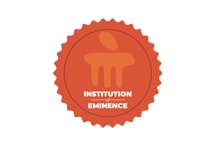Bridging photosynthetic worlds: Creating C4-CAM chimeras through embryo grafting in maize and orchids
Document Type
Article
Publication Title
Scientia Horticulturae
Abstract
Traditional grafting practices exclude monocots due to their physical incompatibilities. Their distinct anatomical features, such as scattered vascular bundles and parallel venation and lack of vascular cambium, don't allow for graft healing. The recent development of embryonic grafting has disapproved the requirement of vascular cambium for grafting, instead relying on undifferentiated tissue. We grafted the embryos of two photosynthetically different plants- Zea mays (C4) and Dendrobium ovatum (CAM). We successfully generated grafts through a ‘whole embryo-protocorm’ method. The grafts showed multiple morphological characteristics, which included curling of leaves, stunted growth, and callus-like structure. We did an anatomical analysis to confirm graft union and vascular connectivity. The grafts showed over an 80 % survival rate across all morphology 30 days after grafting. The embryonic meristematic cells proliferated and healed the graft junction, thus allowing the grafted embryo to grow as an individual plant. This technique opens avenues for trait transfer between monocot crops.
DOI
10.1016/j.scienta.2024.113416
Publication Date
10-1-2024
Recommended Citation
Mukundan, Nidhi S.; Patil, Arun; Mense, Dnyanesh Sanjay; and Rodrigues, Suman Lawrence, "Bridging photosynthetic worlds: Creating C4-CAM chimeras through embryo grafting in maize and orchids" (2024). Open Access archive. 10030.
https://impressions.manipal.edu/open-access-archive/10030


